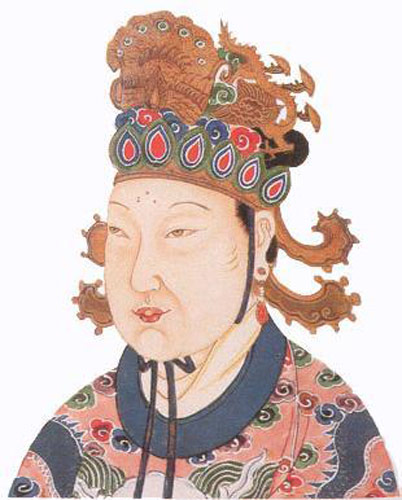 Historically, the Tang Dynasty represented a turning point for women in China. It was during this period that women throughout China had their voices heard. The Empress Wu Zetian (624-705), personal name Wu Zhao, reigned as head of China during those years.
Historically, the Tang Dynasty represented a turning point for women in China. It was during this period that women throughout China had their voices heard. The Empress Wu Zetian (624-705), personal name Wu Zhao, reigned as head of China during those years.
The Early Life
Wu Zetian was born in Wenshui in 624 in Shanxi province. Wu was born into a family of nobility; this became instrumental in her preparation for her success as Empress. She was educated in politics, music, and history. Her father Wu Shihuo, a chancellor who earned great prominence during the Tang Dynasty, was helpful in honing her skills as a states-woman.
She traveled with her parents that afforded her to gain knowledge and exposed her to understand her culture. She was described as a strong-willed child; she refused to do needlework and other activities girls her age was expected to be involved in. She was more interested in reading. This helped her gain a wider view of political affairs.
The Start of Life In the Palace
She came to the Tang Palace at age 14 and became Emperor Taizong’s concubine. She had early struggles, she was not the emperor’s favorite. She was praised for her beauty and literary talents. Because of her youth, she had much to learn about the real world.
It was at this time that she met Prince Li Zhi, who later became emperor. When Emperor Taizong died in 649, Wu Zetian was sent to a temple where she was to serve the rest of her life as a Buddhist nun.
Consequently, Li Zhi became Emperor Gaozong. It seemed that it was fate that he met Wu Zetian early in her life at the palace.
The new emperor was enamored by Wu Zetian’s beauty, it was at this time that Empress Wang, the mother of the new emperor was not pleased with the current Consort Xiao. To divert her son’s affection away from Xiao, Wu Zetian returned to the palace where she became a concubine of the new emperor.
Rise to Power
Wu Zetian wanted to be more than the emperor’s concubine. She was grateful to the empress for bringing her back to the palace. It was at this time that she gained favor from both emperor and empress; this earned her the position of Zhaoyi. The title meant that she was the highest ranked concubine out of the nine but still under the Empress.
Historians say that it was during this time that Wu Zetian and Empress Wang conspired against Consort Xiao and relegated her into being a commoner. Still, Wu’s desire to become the first woman emperor consumed her.
Since she gained the favor of the emperor, this led her not just to be the Emperor’s consort, she gave birth to her first son in 652. A year later her second son was born in the palace and then a daughter in 654. It was at this time that Wu decided to take the Empress position from Wang.
Empress Wang did not have a child, but she grew fond of Wu’s daughter. Reports have it that before the Emperor returned from one of his travels, Wu strangled her own daughter shortly after Wang left. Wang was accused of killing Wu Zetian’s daughter and stripped of her title as Empress. Wu Zetian was announced as the new Empress in 655.
The Empress
Empress Wu Zetian participated in state affairs right away. This paved the way for her to be a true ruler. She took part in disposing of Zhangsun Wuji and Chu Suiliang, chancellors loyal to the former Empress. This was the start of her rise to power and influence, making her the first woman emperor during the Tang Dynasty.
Emperor Gaozong was afflicted by an eye disease in 660 a.d. and this was Wu Zetian’s chance to take control of matters of the state. She took over the governance since the emperor was weak because of his disease. She realized her dream by deposing his sons from Consort Xiao to completely grab the title of emperor.
She became Empress in 690 and became the first woman to rule during the Tang Dynasty. There were doubters, questions loomed over whether she would be able to take hold of the affairs of the country and be effective. She proved that she could. Her decisions became renowned and under Wu Zetian’s rule, the Silk Road opened, this brought China and Middle Asia together as trading partners.
Wu Zetian fell ill due to old age; she died at the age of 82 in 705 AD. Empress Wu Zetian claimed the throne, she opened the eyes of women that if they worked at it, anything is possible, not only in China, but to women all over the world.